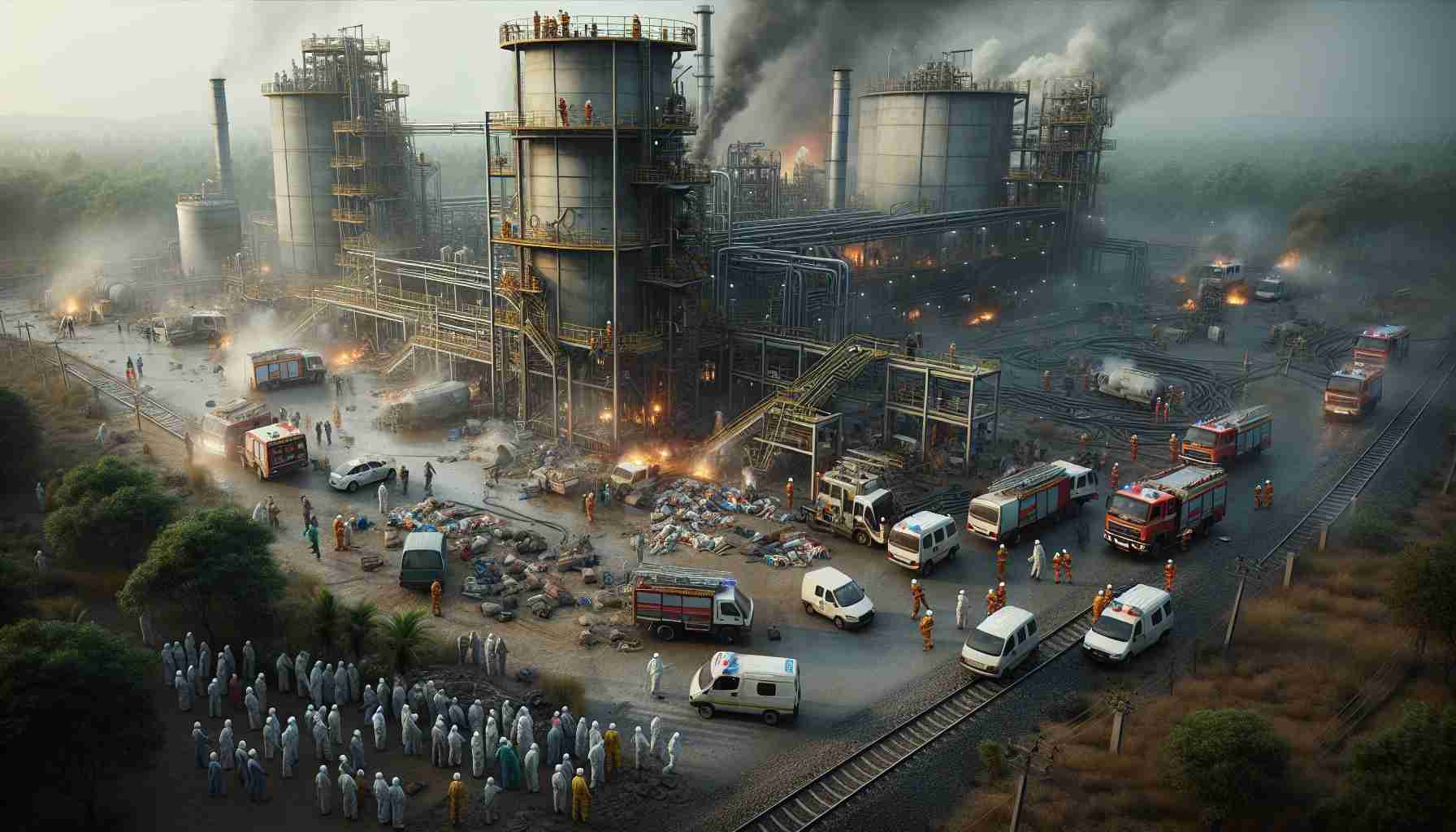A recent accident at a fertiliser manufacturing facility in the Sangli district of Maharashtra has resulted in the unfortunate deaths of two female workers and a security guard. The incident was a consequence of hazardous ammonia gas inhalation, which underscores the potential perils associated with such chemicals.
According to reports, the event occurred in the vicinity of the well-known 19th-century Shree Ganpati temple in Sangli, a locale usually marked by its tranquility and heritage. This tragedy serves as a stark reminder of the inherent risks involved in handling industrial chemicals, particularly ammonia, a common compound used in fertiliser production.
Emergency services quickly responded to the scene, but despite their efforts, they were unable to save the lives of the victims. The incident has raised concerns about workplace safety protocols and the proper handling of toxic substances in industrial settings.
Officials have begun an investigation into the circumstances surrounding the explosion and the subsequent gas leak, aiming to uncover any lapses in safety measures that may have contributed to this devastating event. Community members are mourning the loss while seeking assurance that steps will be taken to prevent future occurrences, emphasizing the responsibility of companies to protect their employees.
This sorrowful event brings to focus the critical need for stringent safety regulations in industries that work with hazardous materials, highlighting the importance of safeguarding human life in every workplace.
Safety Tips and Life Hacks for Working with Hazardous Materials
The recent tragic incident at a fertiliser manufacturing facility reminds us of the critical importance of safety in workplaces that engage with hazardous materials like ammonia. To navigate the risks associated with such environments, here are some invaluable safety tips and life hacks, along with interesting facts that can help protect workers and promote a safer industrial culture.
1. Understand the Material Safety Data Sheet (MSDS)
Before working with any hazardous substance, familiarize yourself with its MSDS. This document will provide essential information about the chemical properties, potential hazards, safe handling instructions, and emergency procedures. Knowing this can significantly reduce risks at the workplace.
2. Utilize Personal Protective Equipment (PPE)
Always wear appropriate PPE, which may include gloves, goggles, face shields, and protective clothing. This gear acts as your first line of defense against chemical exposure and other workplace hazards. Ensure that PPE is in good condition before use and is specifically designed for the risks associated with the materials handled.
3. Implement Proper Labeling and Signage
Ensure all hazardous materials are clearly labeled and that warning signs are displayed in areas where these substances are used or stored. Clear communication is vital in preventing accidents and ensuring everyone is aware of potential dangers.
4. Conduct Regular Safety Drills
Regularly practice emergency response drills among employees. Familiarization with evacuation routes and emergency procedures can save lives in the event of a hazardous incident. Regular training keeps safety protocols fresh in the minds of employees.
5. Maintain a Clean Workspace
A clutter-free environment minimizes hazards and provides clear access to exits and first-aid equipment. Regular cleaning schedules can help reduce the risk of spills and accidents caused by disorganization.
Interesting Fact: Did you know that ammonia is one of the most widely used industrial chemicals, primarily because of its role in the production of fertilisers? However, it also poses serious health risks, particularly respiratory issues when inhaled.
6. Report Unsafe Conditions Immediately
Establish a culture where all employees feel empowered to report unsafe conditions or behaviors without fear of retaliation. Quick reporting and corrective action can prevent potential accidents.
7. Use Technology to Monitor Air Quality
In industries where hazardous gases are present, invest in air quality monitoring systems. These technologies can provide real-time information about air safety levels and alert workers to any dangerous changes in air quality.
8. Know Emergency Contact Numbers
Set up an easily accessible list of emergency contact numbers, including local medical facilities, poison control, and emergency services. In an emergency, having quick access to this information can save precious time.
The importance of safety cannot be overstated in industries that deal with hazardous materials. Implementing these practices contributes to a safer working environment, ultimately saving lives and ensuring the well-being of all employees. For more on enhancing workplace safety and health standards, visit OSHA for additional resources and guidelines.
Remember, safety is not just a priority; it is a culture that needs to be instilled in every workplace to ensure everyone’s protection against potential hazards.

